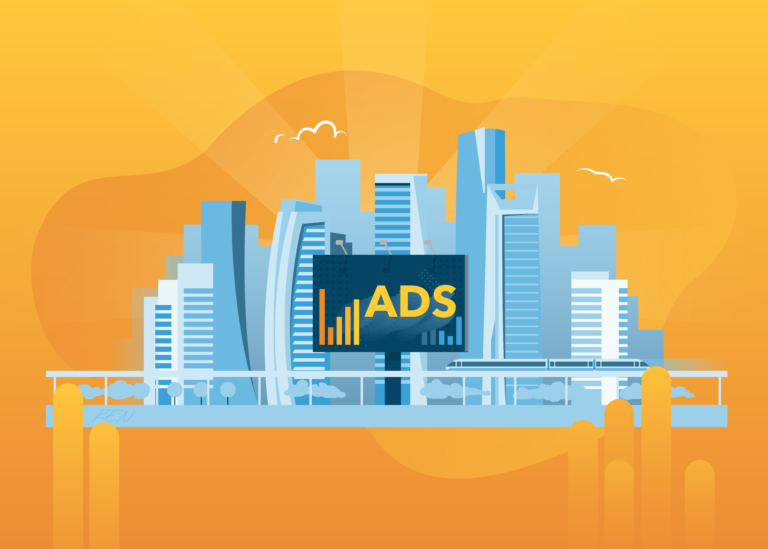When asking CMOs their thoughts on out-of-home advertising, I often hear the same answer:
“It’s great for brand awareness!”
And they aren’t wrong. But (you knew there’d be a “but”, right?) it’s not the whole story.
Just like any other advertising effort you make, there should be metrics of performance in order to justify costs. No matter what your goals or success metrics may be, it likely never stops at simply “brand awareness”. No matter what, top-of-funnel branding initiatives without a clear path to purchase will negatively impact conversion. Alternatively, building your company over the long term will be impossible if you solely concentrate on the bottom-of-the-funnel.
Ta-da! That is why, for all marketers, the two-for-one deal of brand building + performance marketing = the key to making your ad dollars work harder for you.
And I’m here to tell you, out-of-home (OOH) advertising can do that for you.
What is out-of-home advertising?
First, I just want to make sure that we’re on the same page, because up until a few months ago, “OOH” wasn’t an acronym I was familiar with.
Out-of-home advertising is any sort of visual ad a consumer might see while outside their home, as opposed to TV commercials, social ads, etc. The first thing that comes to mind with OOH is usually billboards, but that is only one of its many forms.
It may be anything from billboards, to digital signs at a bus/metro stop, to wraps on buses, trucks, or vehicles. It is one of the oldest forms of advertising, which might be the reason marketers think that the measurement techniques would be outdated. But over the last several years, innovators in the space have created ways to measure OOH advertising to help marketers understand overall performance.
How out-of-home advertising balances brand building and performance marketing
Out-of-home advertising has evolved beyond its former “impressions only” measurement style. Thanks to something almost everyone has, a smartphone, we can now measure exposure to offline media. Mobile Ad IDs (or MAIDs), created by Google and Apple, utilize location-based services to capture an exposed audience. While the audience member remains completely anonymous, the MAIDs help marketers to track whether exposure to an offline advertisement triggered another action, such as:
- A website visit
- An online sales conversion
- An app download
- Footfall at a physical location
Conversion doesn’t always happen immediately after exposure to an OOH advertisement, but the ads can increase the effectiveness of other marketing channels. Therefore, the MAIDs can also be used in a marketer’s retargeting efforts, for a full omnichannel strategy (more on that here).
That’s how adding out-of-home advertising into your entire marketing strategy can have many positive effects besides the traditional role of boosting brand awareness. Basically, there’s never been a better time to rethink how your company uses OOH advertising to its full potential. In today’s digital age, OOH advertising can go beyond its traditional role of brand awareness. When you use this medium correctly, it can boost all your marketing efforts.
Making OOH work for you
I touched on this briefly earlier, but wrapped transportation or “Digital Moving Out Of Home” (DMOOH), is gaining traction recently. Since it’s mobile, it provides reach and frequency to create large AND targeted exposed audiences.
As opposed to other DMOOH, at Wrapify, we do all of the heavy lifting. We bring a fresh take to the out-of-home sector with the combination of our wrapped vehicles alongside:
- Media measurement
- Physical audience retargeting
- Data insights
…all within one platform.
With Wrapify, OOH advertising can be a top-of-the-funnel brand awareness play with bottom-of-the-funnel results. Not only do we create outdoor advertisements that move, but we also give you data on how they translate to conversions. This can help give you that “one-two!” punch when it comes to successful ad strategies.
Get in touch to learn more about performance-driven OOH advertising with Wrapify.
